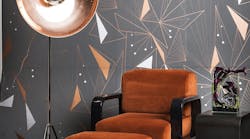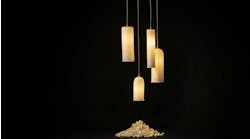In case you missed it, in 2008, the Great Recession struck the U.S. However, some brightness came of its black hole: New economies were forged within the internet marketplace.
These, though, had problems of its own.
Aspiring to transparency in a design industry so holistically affected by online retailing, I’m curious how the transactional buying and selling between design professional and retailer or dealer was affected by the dotcom disruption. What was it that became so problematic?
As a maker, and as someone passionate about the sustenance of independent fabricators and designers, these backstories are important to understanding how our industry operates, so that we can be a viable part of it and learn from its mistakes.
THE FLASH SALE PHENOMENON
Paradoxically, the 2008 recession made space for loads of industry-external venture capital to be poured into new online marketplaces that could offer interesting design product (or fashion, or small tech items) for less: flash sale sites.
Curated Space by Drew McGukin
Lamp by Hostler Burrows
It was a moment that authorized a whole business model predicated on this coincidental recession, which had left brands with excess inventory they couldn’t seem to sell to now-thrifty consumers. These new online “retailers” would swoop in and place big orders of product that brands, at this point, were willing to sell at significant discounts to a new, heretofore unproven marketplace.
These discount e-commerce sites arose to prominence (or at least visibility) and were selling the same furnishings and products found in brick and mortar stores and showroom spaces, but with discounts that, because the overhead was so much lower than a physical store, they could afford.
THE E-COMMERCE MODEL BREAKS
Within the first couple years, the discount sites began oversaturating their marketing and product launches, resulting in diluted sales per brand – not to mention a compromise of curatorial and editorial integrity. Eventually, only very small quantities were being sold of any single product or design. There was simply too much to choose from.
At the beginning, these “buyers” wrote purchase orders for the large quantities of product that recession-hit brands were sitting on; the designers or brand owners were paid up front, and the online platforms stocked inventory of the goods and shipped them from their own warehouses to fulfill online orders. Soon, the online platforms realized even when it came to discounted product, consumers were less hungry than they’d anticipated; the “retailers” were now sitting on a large stock of stagnant goods.
Wallpaper by Michele Varian
Chair and Ottoman by Marie Burgos
In essence, they bit off more than they could chew. A necessary shift in the buyer-vendor relationship reduced the e-commerce sites’ roles to that of a laissez-faire middle person, ultimately transferring all the economic risk and all the operational burden onto the brand.
WHEN E-COMMERCE WORKS
To be clear, I am by no means making the argument that e-commerce is not a successful model for selling, for sharing great design, or for brokering buyer-designer relationships. I am arguing, though, that the flash sale model in particular—a result of the internet’s disruption of the way that independent makers conducted sales—was unsustainable, and it screwed a lot of designers over.
I Hear Design: The interiors+sources PodcastThink of 1stdibs. It, too, is an online retailer of independent design, as well as other luxury-grade and vintage design. 1stdibs is incredibly successful. Its digital audience contains over five million loyal followers; Forbes reports that its registered users exceed the 100,000 mark, and its dealers are in the multiple thousands, serving buyers from over 50 countries.
1stdibs’ model differs from other e-commerce platforms in that only authorized dealers can list product. This makes the listings tightly curated, unlike the free-for-all of the flash sale model.
Whereas 1stdibs, which began as exclusively to-trade, behaves sensitively to the design industry it operates within, flash sale sites compromised the value of what they were selling B2C (business-to-consumer). The sites brought things online in a rush and eventually had to underprice to clear stock, cheapening the whole endeavor and eventually drowning in their offerings. 1stdibs took a more traditional sales paradigm and digitized it, allowing its B2B (business-to-business: the design trade) to flow within a known paradigm, modernized to the digital age. It was the appropriate mechanism for growing into e-commerce, and it honored the design world in doing so.
DESIGN COMMERCE CONTINUES TO EVOLVE
While the recession was obviously a disaster, a new marketplace was able to flourish because of it. 1stdibs got design e-commerce right by not undercutting fabricators or compromising the quality of its pieces and its promotion.
Table by Kin & Company
Flowers by Michael Collins Decor
Now 1stdibs, as was recently announced, is opening a brick-and-mortar store. It will be on New York City’s west side, housed in the Terminal Stores building, an already design-friendly location – it’s host to WantedDesign Manhattan during NYCxDESIGN. The current 1stdibs showroom in Manhattan’s New York Design Center will phase out, substituted by this new ground-level and more approachable retail store. For designers, industry trade, and even for digitally native design enterprises, brick and mortar is valuable. You can’t just sell online anymore: The “experience,” and touch-and-feel of design and its materials, is all the more important in a world reeling from a deep dive into a digital-majority existence.
Some design companies were burned by some e-commerce endeavors during this fast and furious, initial movement into digital sales models. 1stdibs even faced some criticism, as a lot of antiques or luxury design dealers were peeved because the privacy of its product pricing was compromised. This meant its clients now had easier access to elevated heritage design pieces. But there is a way forward from all of it.
With a return to brick and mortar supplementing e-commerce and the lesson of successful online selling models that start out with the industry’s interests at heart, design commerce will prevail. In fact, it is becoming stronger than ever.






